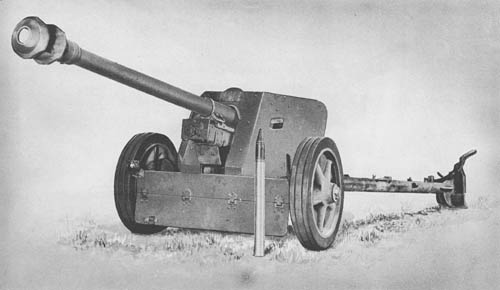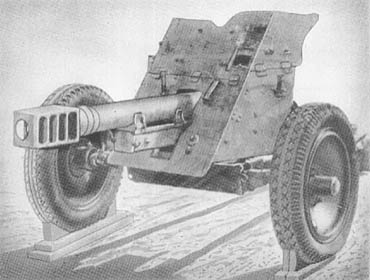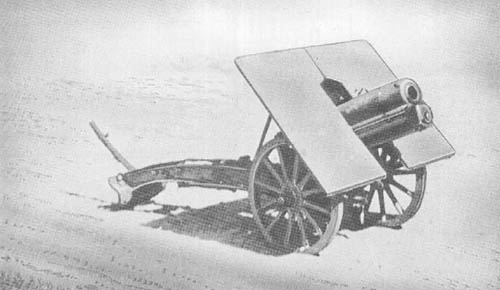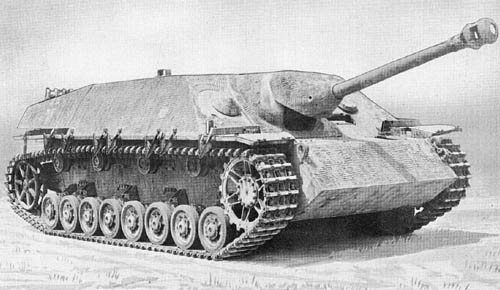
The Pak 40, an antitank and antipersonnel weapon, has a barrel of monobloc construction to which is screwed a two-baffled muzzle brake. The horizontal sliding type breechblock operates semi-automatically. Recoil and counterrecoil are effected by means of a hydraulic buffer and a hydropneumatic recuperator.
The welded steel carriage has tubular trails, light alloy steel wheels with solid rubber tires, and a 5 mm spaced armor shield for the protection of the gun crew. There are two types of brakes: air brakes, which are operated from the prime mover, and hand brakes for placing the gun in firing position.
Although no sighting equipment was captured with the gun, it is assumed that there was a telescopic sight for direct fire, a sight for indirect fire, and an auxiliary open sight. Mounts for these sights are attached to the breechring and the left trunnion.
There is also a gun known as the 7.5 cm Pak 97/40. This gun consists of a French Model 1897 piece mounted on the carriage of a German 7.5 cm Pak 40, but usually on Pak 38 carriage.
A modification of this gun is used on the chassis of the Pz. Kw. II tank and the Czech Pz. Kw. 38 (t) converting these vehicles into gun motor carriages.
The 75 mm tank gun, KwK. 40, used in Pz. Kw. IV is an adaptation of the Pak 40.
SPECIFICATIONS
| Caliber | 75 mm (2.95 ins.) | |
| Length of tube | 126.1 ins. | |
| Weight (travelling position) | 3,350 lb. | |
| Length (travelling position) | 19 ft. | |
| Length of bore | 96.89 ins. | |
| No. of grooves | 32 | |
| Width of grooves | .175 in. | |
| Depth of grooves | .025 ins. | |
| Width of lands | .116 in. | |
| Muzzle velocity (A.P.C. shell) | 2525 f/s | |
| Traverse | 65° | |
| Elevation | +22° | |
| Depression | -5° | |
| Length of recoil | 35.43 ins. | |
| Ammunition | A.P.-H.E.-H.E. hollow charge | |
| Wt. of projectile (A.P.C.) | 15 lb. |
German: p. 117


